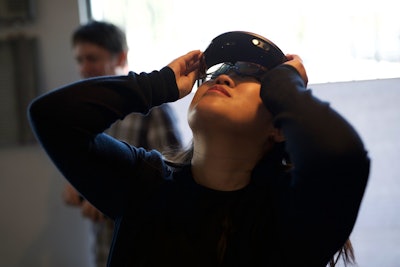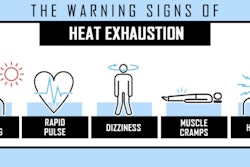
The mass and wide-scale adoption of augmented and mixed realities are gathering pace across a multitude of industries. In the equipment rental industry, this emerging technology can play a significant role in changing the way technicians and the business collaborate to resolve technical issues, provide support and access documentation. Technologies such as AR smart glasses can overlay digital information (such as text, video or audio) onto the human field of views, interactively and in real-time. ABI Research sees a turning point for AR smart glasses, predicting that 21 million units of AR smart glasses will be shipped in 2020, with sales expected to reach $100 billion.
Optimizing service workflows
Mixed and AR technologies present strong use cases for the rental industry for optimizing service workflows. The ability to perform time-critical jobs thoroughly, quickly and first time around, is just one benefit.
Historically, service technicians had to sift through paper manuals or search their memories to find a fix for complex equipment issues. This was an onerous process to go through and often resulted in disgruntled customers. Today, however, Augmented Reality headsets provide technicians with the ability to communicate, collaborate and solve issues more efficiently. They could be dispatched to a job where they could see the service manual, real-time data and technical details about the product directly overlaid on it. There would be no need for a clunky laptop, phoning a colleague for assistance or contacting the back office for customer information; everything they need would be accessible with a flick of their head.
There is a big place for Augmented Reality in optimizing service workflows in rental operations. However, deploying new technology takes careful planning to realize the full benefits.
Empowering less skilled and aging workforces
In mission-critical industries, such as construction, manufacturing and agriculture, ensuring that the service team captures knowledge and transfers it efficiently across the organization is a ‘must have,’ not a ‘nice to have.’ Asset downtime or system failure is not an option as it may result in entire projects grinding to a halt and monetary losses. Issue resolution needs to be quick, and this is where collaborative video tools can best support a less skilled and aging workforce.
Video collaboration with augmented peer-to-peer help is being designed and implemented to connect less skilled technicians with more skilled ones remotely. A technician with specific areas of expertise may reside in an office and virtually walk an apprentice through a service call, step-by-step. Markups can be made during a video call between an expert and field technician to be sure the field technician is clear about what to perform service on. The expert can draw a circle or arrow on a screen to highlight a specific area, eliminating costly mistakes.
There are parts of the world where you can’t get the right expertise for a job or flying out a specialist may prove too costly for a company. Augmented reality eradicates these concerns by allowing experts to take those of less skill through the entire process. Not with a manual and not on the phone, but they can see what they are doing.
Many technicians are performing this peer-to-peer help in ad hoc ways today; using tools like FaceTime and Skype. This, however, has resulted in issues. For example, sending a FaceTime request to another technician can be very disruptive. It is also difficult for the technician requesting help to know whom to contact and if they are available. For organizations that want to scale this technology successfully, they need to consider how to integrate it more tightly into the service workflow.
As technicians age and a new crop of workers joins the business, it is imperative that the latter be able to leverage past knowledge. An aging workforce places pressure on rental organizations. The benefit of augmented or virtual reality is its potential as a highly detailed, highly visual training tool. Companies are recording repairs being performed on older pieces of equipment to be used as a reference by less experienced technicians. By utilizing augmented reality to make markups pointing to specific equipment details, service companies can create a searchable library using descriptive metadata, and hashtags for quick access. This is a great way to offer on-the-job training and avoids the downtime and loss of productivity associated with having the entire team come into the office to learn new techniques.
Collaborative video tools not only provide the field team with the real-time assistance when solving complex issues, but they also connect field service to the entire organization. Indeed, video content, such as markups and screenshots, can be captured by augmented reality tools and stored in a cloud. The stored data can then be tied with a work order and include valuable metadata such as geolocation, type of equipment, date of the last service. If such data is centrally stored and can be easily accessed, it could be used for purposes like new technician training, proof of work and so on.
Equipment rental organizations depend on fully operational equipment to keep customers happy. Augmented and mixed reality implementation will reduce equipment downtime and could even help the customer troubleshoot to avoid unnecessary equipment downtime.




















